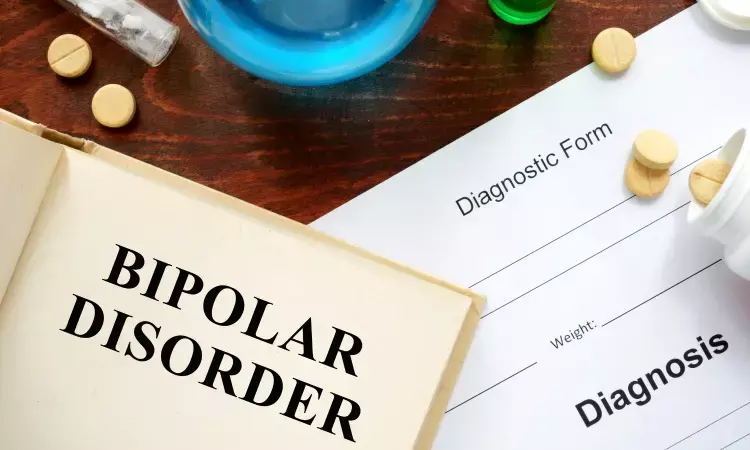- Home
- Medical news & Guidelines
- Anesthesiology
- Cardiology and CTVS
- Critical Care
- Dentistry
- Dermatology
- Diabetes and Endocrinology
- ENT
- Gastroenterology
- Medicine
- Nephrology
- Neurology
- Obstretics-Gynaecology
- Oncology
- Ophthalmology
- Orthopaedics
- Pediatrics-Neonatology
- Psychiatry
- Pulmonology
- Radiology
- Surgery
- Urology
- Laboratory Medicine
- Diet
- Nursing
- Paramedical
- Physiotherapy
- Health news
- Fact Check
- Bone Health Fact Check
- Brain Health Fact Check
- Cancer Related Fact Check
- Child Care Fact Check
- Dental and oral health fact check
- Diabetes and metabolic health fact check
- Diet and Nutrition Fact Check
- Eye and ENT Care Fact Check
- Fitness fact check
- Gut health fact check
- Heart health fact check
- Kidney health fact check
- Medical education fact check
- Men's health fact check
- Respiratory fact check
- Skin and hair care fact check
- Vaccine and Immunization fact check
- Women's health fact check
- AYUSH
- State News
- Andaman and Nicobar Islands
- Andhra Pradesh
- Arunachal Pradesh
- Assam
- Bihar
- Chandigarh
- Chattisgarh
- Dadra and Nagar Haveli
- Daman and Diu
- Delhi
- Goa
- Gujarat
- Haryana
- Himachal Pradesh
- Jammu & Kashmir
- Jharkhand
- Karnataka
- Kerala
- Ladakh
- Lakshadweep
- Madhya Pradesh
- Maharashtra
- Manipur
- Meghalaya
- Mizoram
- Nagaland
- Odisha
- Puducherry
- Punjab
- Rajasthan
- Sikkim
- Tamil Nadu
- Telangana
- Tripura
- Uttar Pradesh
- Uttrakhand
- West Bengal
- Medical Education
- Industry
Bipolar At-Risk Criteria may predict development of bipolar disorder among young patients in later life

Bipolar disorder, formerly called manic depression, is a mental health condition that causes extreme mood swings that include emotional highs and lows. Preventive and early interventions may help to improve outcomes for people at risk of bipolar disorder (BD), a recurrent condition prevalent in 2% to 3% of the population worldwide.
The findings in a new study suggest that help-seeking adolescents and young adults identified to be at risk using bipolar at-risk (BAR) criteria may benefit from longer-term monitoring and support. The study is published in JAMA Network.
The study was a prospective cohort study, completed between May 1, 2020, and November 7, 2022, included consenting people seeking help for nonpsychotic major mental health difficulties, including mood, personality, and substance use disorders, who were originally recruited at ages 15 to 25 years from a tertiary youth mental health setting in metropolitan Melbourne, Victoria, Australia, from May 1, 2008, to September 30, 2010. The primary outcome was expert consensus diagnosis of BD I or II based on the Mini International Neuropsychiatric Interview, self-reported information collected through online assessments, and linked data on mental health service utilization in Victoria over 10 to 13 years of follow-up.
The key findings of the study are
• Among 69 eligible participants, follow-up data were available for 60 (88.2%). The mean (SD) age at the end of follow-up was 32.9 (2.8) years, and 49 (81.7%) were women.
• A total of 28 participants met BAR criteria, and 32 were in the comparison group. In the BAR group, 8 patients (28.6%) developed BD over a mean (SD) of 11.1 (0.7) years of follow-up, and no patients in the comparison group developed BD.
• The risk of developing BD was higher in the BAR group than in the non-BAR group (χ21 = 70.0; P < .001). The proportions of transitions to BD were equal in the first and second halves of the follow-up period.
Researchers concluded that “ In this cohort study of participants seeking care for mental health difficulties, patients meeting the BAR criteria were significantly more likely to transition to BD over a decade after ascertainment compared with patients not meeting the BAR criteria. The findings suggest that those meeting BAR criteria may benefit from longer-term monitoring and support. Evaluation of predictive properties in longer-term studies using a risk measure will help with implementation of BAR criteria in clinical settings.”
Reference: Ratheesh A, Hammond D, Watson M, et al. Bipolar At-Risk Criteria and Risk of Bipolar Disorder Over 10 or More Years. JAMA Netw Open. 2023;6(9):e2334078. doi:10.1001/jamanetworkopen.2023.34078.
MSc. Neuroscience
Niveditha Subramani a MSc. Neuroscience (Faculty of Medicine) graduate from University of Madras, Chennai. Ambitious in Neuro research having worked in motor diseases and neuron apoptosis is interested in more of new upcoming research and their advancement in field of medicine. She has an engrossed skill towards writing and her roles at Medical dialogue include Sr. Content writer. Her news covers new discoveries and updates in field of medicine. She can be reached at editorial@medicaldialogues.in
Dr Kamal Kant Kohli-MBBS, DTCD- a chest specialist with more than 30 years of practice and a flair for writing clinical articles, Dr Kamal Kant Kohli joined Medical Dialogues as a Chief Editor of Medical News. Besides writing articles, as an editor, he proofreads and verifies all the medical content published on Medical Dialogues including those coming from journals, studies,medical conferences,guidelines etc. Email: drkohli@medicaldialogues.in. Contact no. 011-43720751


